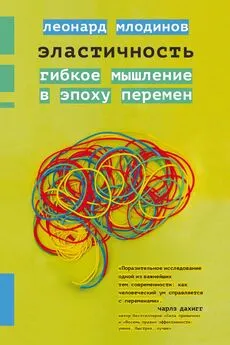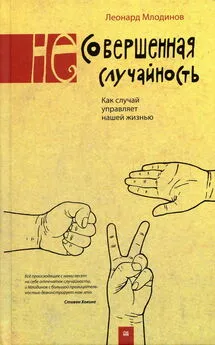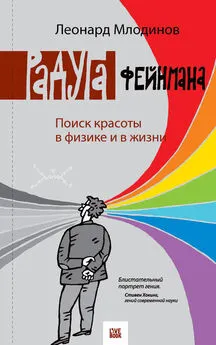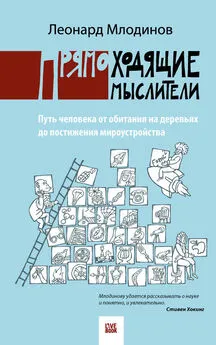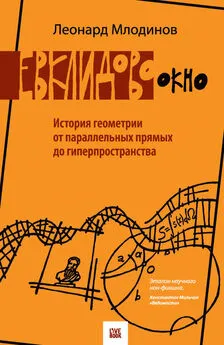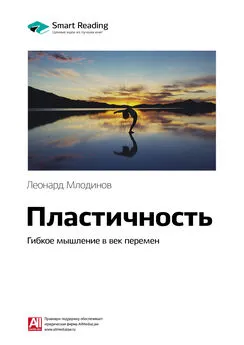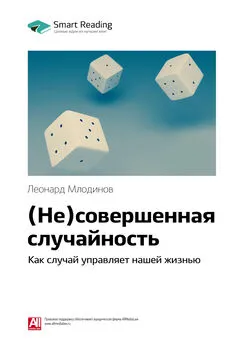Леонард Млодинов - Эластичность. Гибкое мышление в эпоху перемен
- Название:Эластичность. Гибкое мышление в эпоху перемен
- Автор:
- Жанр:
- Издательство:Livebook/Гаятри
- Год:2020
- Город:Москва
- ISBN:978-5-907056-30-5
- Рейтинг:
- Избранное:Добавить в избранное
-
Отзывы:
-
Ваша оценка:
Леонард Млодинов - Эластичность. Гибкое мышление в эпоху перемен краткое содержание
Существует два основных способа мышления: аналитическое, в котором преобладает логика, и эластичное, которое формирует новые идеи и неожиданные решения задач. Именно эластичное мышление позволяет человеку успешно приспосабливаться к безумному ритму жизни.
Из книги вы узнаете: почему полезно выходить из зоны комфорта; как справляться с огромным количеством информации и не сойти с ума; как мозг создает смыслы и учится адаптации; как Мэри Шелли, Дэвид Боуи и Альберт Эйнштейн использовали эластичное мышление; почему игра Pokemon Go обрела небывалую популярность.
Эластичность. Гибкое мышление в эпоху перемен - читать онлайн бесплатно ознакомительный отрывок
Интервал:
Закладка:
83
Cade Metz, “In a Huge Breakthrough, Google’s AI Beats a Top Player at the Game of Go”, Wired, 27 января 2016 г.
84
Derek C. Penn et al., “Darwin’s Mistake: Explaining the Discontinuity Between Human and Nonhuman Minds”, Behavioral and Brain Sciences 31 (2008): 109–120.
85
Charles E. Connor, “Neuroscience: Friends and Grandmothers”, Nature 435 (2005): 1036–1037.
86
Quiroga, “Concept Cells”, 587–594.
87
L. Gabora, A. Ranjan, “How Insight Emerges”, в: The Neuroscience of Creativity, сост. Oshin Vartanian et al. (Кембридж, Массачусетс: MIT Press, 2013), 19–43.
88
Bryan Kolb, Ian Whishaw, Introduction to Brains and Behavior (Нью-Йорк: Worth, 2006), 45, 76–81, 157.
89
Hasan Guclu, “Collective Intelligence in Ant Colonies”, The Fountain 48 (октябрь-декабрь 2004 г.).
90
Deborah Gordon, “The Emergent Genius of Ant Colonies”, TED Talk, февраль 2003 г., http://www.ted.com/talks/deborah_gordon_digs_ants.
91
Есть похожие структуры и в мозге птиц. – Примеч. автора.
92
Нейтэн Мирволд, из беседы с автором 15 января 2016 г.
93
Greg Critser, Fat Land: How Americans Became the Fattest People in the World (Нью-Йорк: Houghton Mifflin, 2004), 20–29.
94
Geoff Colvin, “Why Every Aspect of Your Business Is About to Change”, Fortune, 22 октября 2015 г.
95
Michal Addady, “Nike Exec Says We’ll Be 3D Printing Sneakers at Home Soon”, Fortune, 7 октября 2015 г.
96
Vinod Goel et al., “Differential Modulation of Performance in Insight and Divergent Thinking Tasks with tDCS”, Journal of Problem Solving 8 (2015): 2.
97
Douglas Hofstadter, Go#del, Escher, Bach (Нью-Йорк: Vintage, 1979), 611–613.
98
Robert Weisberg, Creativity (Нью-Йорк: John Wiley and Sons, 2006), 306–307.
99
Edna Kramer, The Nature and Growth of Modern Mathematics (Принстон, Нью-Джерси: Princeton University Press, 1983), 70.
100
Shinobu Kitayama, Ayse K. Uskul, “Culture, Mind, and the Brain: Current Evidence and Future Directions”, Annual Review of Psychology 62 (2011): 419–449; Shinobu Kitayama et al., “Perceiving an Object and Its Context in Different Cultures: A Cultural Look at New Look”, Psychological Science 14 (май 2003 г.): 201–206.
101
Scott Shane, “Why Do Some Societies Invent More Than Others?” Working Paper Series 8/90, Wharton School, сентябрь 1990 г. Из-за того, что по некоторым годам данные недоступны, кое-какие страны в таблицу не включены.
102
“A New Ranking of the World’s Most Innovative Countries”, Economist Intelligence Unit report, апрель 2009 г., http://graphics.eiu.com/PDF/Cisco_Innovation_Complete.pdf.
103
Karen Leggett Dugosh, Paul B. Paulus, “Cognitive and Social Comparison in Brainstorming”, Journal of Experimental Social Psychology 41 (2005): 313–320; Karen Leggett Dugosh et al., “Cognitive Stimulation in Brainstorming”, Journal of Personality and Social Psychology 79 (2005): 722–735.
104
Marcus Raichle et al., “Rat Brains Also Have a Default Network”, Proceedings of the National Academy of Sciences 109 (6 марта 2012 г.): 3979–3984.
105
Маркус Рэйкл. Темная энергия мозга // В мире науки. 2010. № 5. С. 24–29.
106
Влиятельнейший труд Рэйкла: Marcus E. Raichle et al., “A Default Mode of Brain Function”, Proceedings of the National Academy of Sciences 98 (2001): 676–682. Историю этих исследований см. в: Randy L. Buckner et al., “The Brain’s Default Network”, Annals of the New York Academy of Sciences 1124 (2008): 1–38.
107
Историю Бергера см. в: David Millett, “Hans Berger: From Psychic Energy to the EEG”, Perspectives in Biology and Medicine 44 (осень 2001 г.): 522–542; T. J. La Vaque, “The History of EEG: Hans Berger, Psychophysiologist; A Historical Vignette”, Journal of Neurotherapy 3 (весна 1999 г.): 1–9; P. Gloor, “Hans Berger on the Electroencephalogram of Man”, EEG Clinical Neurophysiology 28 (доп. 1969): 1–36.
108
La Vaque, “The History of EEG”, 1–2.
109
Millett, “Hans Berger”, 524.
110
La Vaque, “The History of EEG”, 1–2.
111
Подробнее об этом см. в: Marcus Raichle, “The Brain’s Dark Energy”, Scientific American, март 2010 г., 46; Millett, “Hans Berger”, 542. Но были все же исключения, особенно в Великобритании, например: E. D. Adrian and B. H. C. Matthews, “Berger Rhythm: Potential Changes from the Occipital Lobes in Man”, Brain 57 (1934): 355–385.
112
La Vaque, “The History of EEG”, 8.
113
H. Berger, “U#ber das Elektrenkephalogramm des Menschen”, Archiv fu#r Psychiatrie und Nervenkrankheiten 108 (1938): 407. Англ. пер. цит. по: La Vaque, “The History of EEG”, 8.
114
La Vaque, “The History of EEG”, 8.
115
Нэнси Андреасен, из беседы с автором 10 апреля 2015 г.
116
Nancy Andreasen, “Secrets of the Creative Brain”, The Atlantic, июль-август 2014 г.
117
REST – Random Episodic Silent Thinking, случайное эпизодическое молчаливое мышление. Английское слово rest означает покой.
118
Randy L. Buckner, “The Serendipitous Discovery of the Brain’s Default Network”, Neuroimage 62 (2012): 1137–1145.
119
M. D. Hauser, S. Carey, L. B. Hauser, “Spontaneous Number Representation in Semi-Free-Ranging Rhesus Monkeys”, Proceedings of the Royal Society of London B 267 (2000): 829–833.
120
Antonio R. Damasio, G. W. Van Hoesen, “Emotional Disturbances Associated with Focal Lesions of the Limbic Frontal Lobe”, в: Neuropsychology of Human Emotion, сост. Kenneth Heilman, Paul Satz (Нью-Йорк: Guilford, 1983), 85–110.
121
Боковой амиотрофический склероз.
122
Larry D. Rosen et al., “The Media and Technology Usage and Attitudes Scale: An Empirical Investigation”, Computers in Human Behavior 29 (2013): 2501–2511; Nancy A. Cheever et al., “Out of Sight Is Not Out of Mind: The Impact of Restricting Wireless Mobile Device Use on Anxiety Levels Among Low, Moderate and High Users”, Computers in Human Behavior 37 (2014): 290–297.
123
Russell B. Clayton et al., “The Extended iSelf: The Impact of iPhone Separation on Cognition, Emotion, and Physiology”, Journal of Computer-Mediated Communication 20, № 2 (2015): 119–135.
124
Emily Sohn, “I’m a Smartphone Addict, but I Decided to Detox”, Washington Post, 8 февраля 2016 г.
125
C. Shawn Green, Daphne Bavelier, “The Cognitive Neuroscience of Video Games”, в: Digital Media: Transformations in Human Communication, сост. Paul Messaris, Lee Humphreys (Нью-Йорк: Peter Lang, 2006), 211–223. См. также: Shaowen Bao et al., “Cortical Remodelling Induced by Activity of Ventral Tegmental Dopamine Neurons”, Nature 412 (2001): 79–83.
126
Marc G. Berman et al., “The Cognitive Benefits of Interacting with Nature”, Psychological Science 19 (2008): 1207–1212.
127
Joseph R. Cohen, Joseph R. Ferrari, “Take Some Time to Think This Over: The Relation Between Rumination, Indecision, and Creativity”, Creativity Research Journal 22 (2010): 68–73.
128
Giorgio Vasari, The Lives of the Artists (Оксфорд, Великобритания: Oxford University Press, 1991), 290. [Здесь и далее пер. А. Габричевского. – Примеч. перев. ]
129
Подробнее историю Лоу см.: Craig Nelson, The First Heroes: The Extraordinary Story of the Doolittle Raid – America’s First World War II Victory (Нью-Йорк: Penguin, 2003); Carroll V. Glines, The Doolittle Raid (Этглен, Пенсильвания: Schiffer Military/Aviation History, 1991), 13; Don M. Tow, “The Doolittle Raid: Mission Impossible and Its Impact on the U.S. and China”, http://www.dontow.com/2012/03/the-doolittle-raid-mission-impossible-and-its-impact-on-the-u-s-and-china; Kirk Johnson, “Raiding Japan on Fumes in 1942, and Surviving to Tell How Fliers Did It”, New York Times, 1 февраля 2014 г.
130
John Keegan, The Second World War (Нью-Йорк: Penguin, 2005), 275.
131
Glines, Doolittle Raid, 15.
132
Подробнее историю Сперри см.: R. W. Sperry, “Roger W. Sperry Nobel Lecture, 8 December 1981”, Nobel Lectures, Physiology or Medicine 1990 (1981); Norman Horowitz et al., “Roger Sperry, 1914–1994”, Engineering & Science (лето 1994 г.): 31–38; Robert Doty, “Physiological Psychologist Roger Wolcott Sperry 1913–1994”, APS Observer (июль-август 1994 г.): 34–35; Nicholas Wade, “Roger Sperry, a Nobel Winner for Brain Studies, Dies at 80”, New York Times, 20 апреля 1994 г.
133
Sperry, Nobel Lecture, Nobelprize.org, 8 декабря 1981 г.
134
R. W. Sperry, “Cerebral Organization and Behavior”, Science 133 (2 июня 1961 г.): 1749–1757.
135
Там же.
136
Там же.
137
Ivan Oransky, “Joseph Bogen”, The Lancet 365 (2005): 1922.
138
Deepak Chopra, Leonard Mlodinow, War of the Worldviews (Нью-Йорк: Harmony, 2011): 179–180.
139
«Дух бодр, плоть же немощна» (Мф. 26:41)… «Водка крепка, а мясо протухло».
140
«Star Trek: The Next Generation» (1987–1994) – второй американский телесериал, действие которого разворачивается во Вселенной Звездного пути.
Читать дальшеИнтервал:
Закладка:
